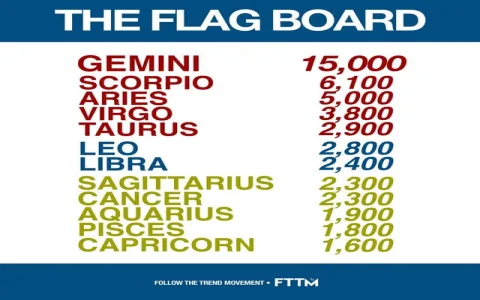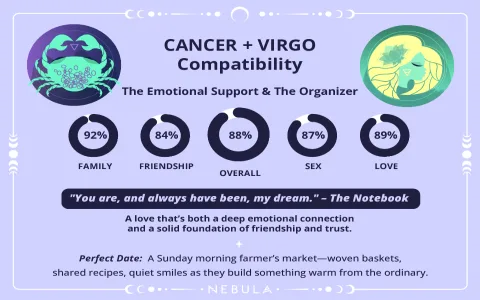Man, let me tell you, if you’re living this Saggi/Virgo dynamic, you know the pain. It’s like one person is trying to build a rocket to Mars (the Saggi) while the other person is standing there with a magnifying glass checking the quality of the individual rivets (the Virgo). We fought for months, maybe years, until I finally slammed the brakes on our whole system.
I realized we weren’t actually fighting about the garbage disposal being broken or whether we should move to Portugal. We were fighting because our communication styles were fundamentally incompatible. The Saggi in the pair (in my case, my partner) would blast off with a grand vision, and before the words were even finished, the Virgo (me) would intercept with seven reasons why the logistics were impossible and two corrections on the grammar used in the initial proposal. Nothing ever got done, just debated to death.
I distinctly remember one argument about buying a new kitchen table. Saggi wanted something reclaimed wood, massive, “rustic chic,” and didn’t care about the budget. I spent three hours tracking down materials costs and delivery windows. When I presented my spreadsheet, he didn’t even look at it. He just said, “Why do you have to kill the vibe?”
The Pivot: Shutting Down the Philosophy Department
The turning point came when I stopped trying to make him feel the logical necessity of my spreadsheets and started treating every conversation like a project management meeting. I forced us to move away from theoretical ‘feelings’ and hypothetical ‘possibilities’ and drag the conversation straight into the mud of action. This was the hardest part for the Saggi, because they hate the mud. They want to fly over it.
I decided we needed a strict framework. If we were going to talk, we were going to talk practically. I literally taped up three rules on the fridge and told him if he deviated, the conversation was paused until he came back to earth.
We instituted the 10-Minute Rule. If Saggi started talking about something abstract—like how the universe works, or why we should spontaneously sell the house and travel Southeast Asia for a year—I had to let him talk for exactly ten minutes. No interruptions. When the timer went off, it was my turn, and my topic had to start with the phrase: “Operationally, the next step is…”
Implementing Practical Communication Tools
This required tools, actual physical tools, because trying to keep a Saggi organized purely through verbal agreement is like trying to catch smoke with a sieve. I went out and bought the biggest whiteboard I could find and installed it in the dining room. It looked ridiculous, but it worked because it forced visibility and accountability. If it wasn’t on the board, it wasn’t happening.
We started mapping everything. Instead of “We should fix up the yard,” the conversation became:
- Phase 1: Diagnosis. (Virgo writes: Assess current sprinkler system and identify dead zones. Deadline: Friday.)
- Phase 2: Budgeting. (Saggi writes: Find three inspirational examples of xeriscaping, max spend $3000. Deadline: Next Tuesday.)
- Phase 3: Procurement. (Virgo handles the details: Order mulch, schedule delivery, check HOA rules.)
The key here was that I gave him the big, fun, research-heavy job—the Saggi zone—and I kept the structure and the deadlines—the Virgo zone. We separated the visionary planning from the grunt work execution. This stopped the Saggi from feeling stifled, and it stopped the Virgo from feeling ignored.
Another thing I hammered home was the use of simple language. I outlawed anything flowery. If he said, “I feel like we should harness the collective energy of our synergy to move forward,” I’d look him dead in the eye and say, “What does that mean? Do you mean you’ll take out the trash?” I drilled down the vague statements into measurable actions. It sounds harsh, but it cut through the noise and anxiety immediately.
It was messy at first. Saggi hated the whiteboard, called it “The Board of Restrictions.” But I held firm. Every time he tried to drag me into a four-hour philosophical debate about the meaning of commitment, I pointed at the board and said, “Is that listed as a priority this week? No. Let’s finish the garage cleaning first.”
The Outcome: Structure Breeds Freedom
What I learned through this aggressive pivot to practical communication is that the Saggi really needs the structure, even if they fight it. They need the freedom to roam, but if they don’t have a fence line to come back to, they just get lost and ineffective. By giving them clear, defined targets and keeping the conversation grounded, we achieved something we never had before: Forward motion.
We still have our moments. Last week, he tried to sneak a discussion about adopting a goat into our meeting about car insurance. I had to physically take the pen out of his hand and redirect the topic. But generally, the chaos has subsided. We used practical communication as a bridge. It bypasses the emotional and philosophical minefield and takes us straight to the “what are we doing now” point, and that’s the only place these two signs can truly thrive together.






